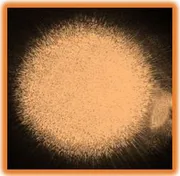 Brazilian scientists have tested a non-destructive and non-invasive optical method to analyse the fresh-cut produce.
Brazilian scientists have tested a non-destructive and non-invasive optical method to analyse the fresh-cut produce.The biospeckle laser technique is based on the optical phenomenon of interference generated by a laser light interacting with biological material or dynamic systems. When the light of the laser reaches a material that exhibits some type of activity, such as the living tissue of produce, this creates changes in the light scattering resulting in interference phenomenon that is known as biospeckle or dynamic speckle.
The scientists at Federal University of Lavras (Brazil) have tested speckle laser technology to measure the physiological activity in fresh-cut carrots stored at 0 and 10 °C for 10 days.
The experimental equipment consisted of a low power He-Ne laser (10 mW; 632.8 nm wavelength), a lens that expanded the laser beam so that it covered the entire sample, a digital color CCD camera and a personal computer with an image processor.
The 128 acquired images (resolution of 640 x 486 pixels; sampling rate of 0.08 s; shutter speed of 1/60 s) were digitalized to 8 bits and stored in the memory of the computer. The images were analyzed by calculation of inertia moment (IM) to quantify the physiological activities of illuminated samples. For image processing, the scientists used 128 images of 486 x 469 pixels, and they obtained results in 25 frequency bands between 0 and 6.25 Hz, which allowed to create a map of frequencies of physiological activities, especially for the identification of respiration rate and water activity change.
By biospeckle laser technology, the scientists have been able to monitor the respiration process in fresh-cut carrots and assign a spectral signature to their water activity and respiration rate.
The scientists conclude highlighting the potential application of speckle laser technology for fresh produce as analytical method to identify non-destructively the physiological phenomena in vegetables.
Source: Alvarenga Alves J., Alves Braga Junior R., de Barros Vilas Boas E.V., "Identification of respiration rate and water activity change in fresh-cut carrots using biospeckle laser and frequency approach", Postharvest Biology and Technology, 2013, Vol. 86, pagg. 381-386. Furher info: http://www.sciencedirect.com/science/article/pii/S0925521413002342
